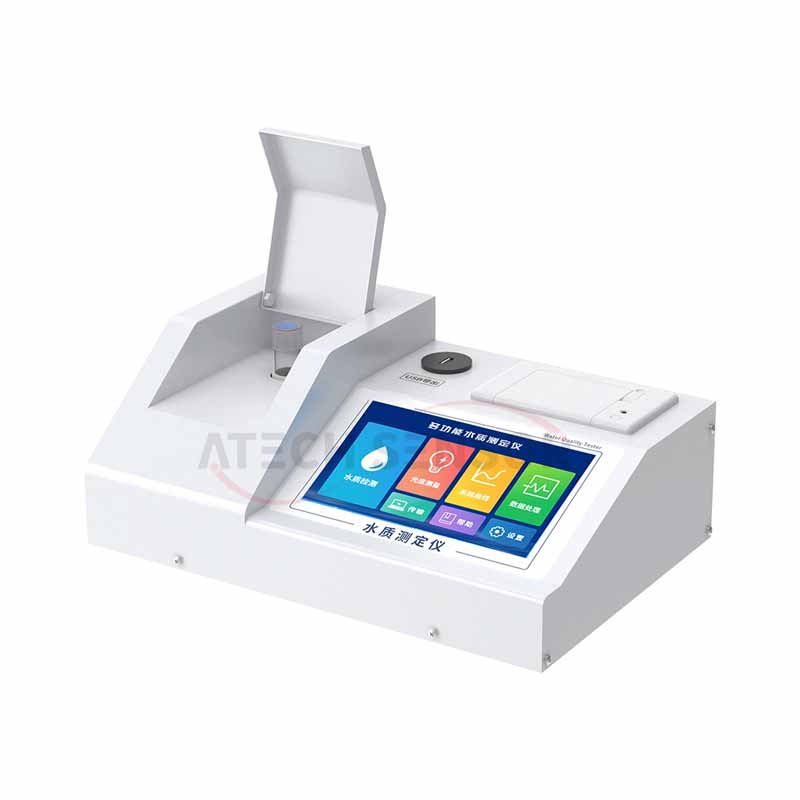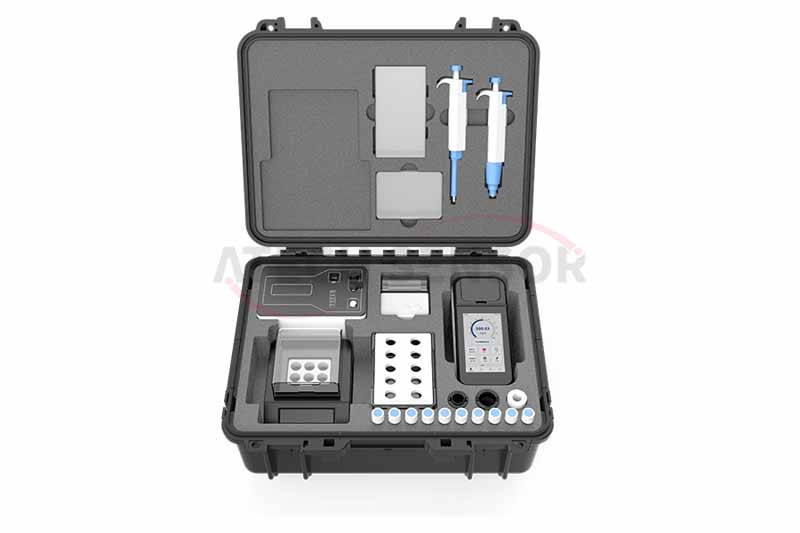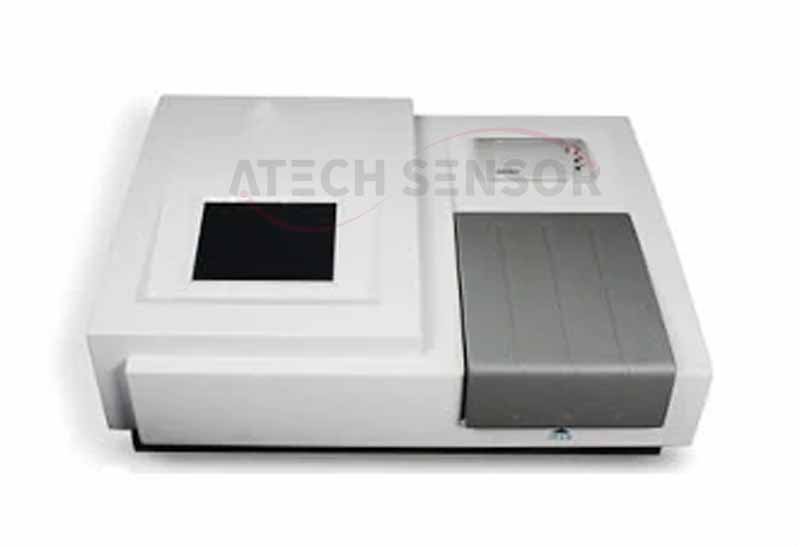The multi-parameter water quality detector is a new type of instrument that can detect water quality simultaneously and quickly. It is easy to operate and has accurate results. It can be used with supporting reagents at the same time, and the results can be obtained quickly without the need to prepare standard solutions or draw standard curves. It is convenient for field sampling and testing.

R&D Background
Water is the source of life. Human beings cannot live without water in their daily life and production activities. The quality of drinking water is closely related to human health. With the development of social economy, scientific progress and the improvement of people's living standards, people's requirements for the quality of drinking water are constantly increasing, and the drinking water quality standards are also constantly developing and improving accordingly. When using supporting reagents, the multi-parameter water quality detector does not need to prepare standard solutions or draw standard curves. Samples or diluted solutions can be directly placed in the multi-parameter water quality detector for quantitative water quality testing. The water quality test results are accurate and easy to operate.

Detection target
Tap water
1.Basic Definition
Tap water refers to water that is produced by water plants by pumping fresh water from rivers and lakes through water distribution pipelines after the water is purified through "coagulation, sedimentation, filtration, and disinfection". Some countries and regions stipulate that it must meet the national standards for drinking water hygiene.
Water that does not meet the water quality test standards is prone to cause infectious diseases such as diarrhea, cholera, typhoid, hepatitis, dysentery, and endemic diseases such as fluorine poisoning and arsenic poisoning.
2.National Standards
The national standard stipulates: total coliform bacteria (MPN/100mL or CFU/100mL) shall not be detected; thermotolerant coliform bacteria (MPN/100mL or CFU/100mL) shall not be detected; Escherichia coli (MPN/100mL or CFU/100mL) shall not be detected; total colony count (CFU/mL) 100.
Chromaticity not exceeding 15 degrees; turbidity NTU not exceeding 3 degrees; smell and taste: no peculiar smell or odor; visible objects shall not contain; PH 6.5-8.5; total hardness (calculated as CaCO3) mg/L 450; iron mg/L 0.3; manganese mg/L 0.1; copper mg/L 1.0; zinc mg/L 1.0; volatile phenol (calculated as phenol) g/L 0.002; anionic synthetic detergent g/L 0.3; sulfate g/L 250; chloride g/L 250; total soluble solids g/L 1000; fluoride g/L 1.0; cyanide g/L 0.05; chloroform g/L 60; total bacteria count individuals/L 100; total coliform count individuals/L 3; residual chlorine g/L ≥0.30.
3.Chlorination disinfection
Most tap water disinfection adopts chlorination method. Chlorine has the advantages of good disinfection effect, low cost and almost no harmful substances. However, after understanding and studying theoretical data, it is believed that chlorine has certain disadvantages in tap water disinfection. Chlorinated tap water can produce carcinogens, and experts from relevant fields have also proposed many improvement measures.
Multi-parameter water quality detector The safest tap water disinfection method in the world is ozone disinfection, but the treatment cost of this method is too expensive, and the retention time of water treated with ozone is limited. As for how long it can be retained, there is no definite concept. Therefore, only a few developed countries use this treatment method.
Seawater testing
The multi-parameter water quality detector can also be used for marine water quality monitoring. The multi-parameter water quality detector can simultaneously measure seven parameters of seawater: temperature, depth, salinity, chlorophyll concentration, turbidity, dissolved oxygen and pH value.
Influencing factors
In the process of using a multi-parameter water quality detector to detect water quality, the factors that can affect water quality detection mainly include source factors and category factors. The first is the source factor. In daily work, sometimes the staff will get the source of the water quality samples to be tested wrong, which will lead to the inability to correctly analyze the water quality results, resulting in the inability to provide solutions to the problem. Secondly, for different water quality samples, different parameter detection methods should be selected on the multi-parameter water quality detector. For example, the detection methods used for ground water quality and groundwater quality are very different. The ground water quality can be preliminarily sampled by observing the changes in the water level, flow rate and flow direction of the water body, the distribution of coastal cities, industrial layout, pollution sources and their sewage discharge, and urban water supply and drainage. However, the collection of groundwater quality is not suitable for this method. It needs to collect water samples based on the urban development, industrial distribution, land utilization rate, etc. in the water quality area. If the differences in various types of water quality are not correctly recognized, the correctness of the results of water quality detection will be affected. The available amount of water resources is limited. Water resources are not inexhaustible. Therefore, we should pay attention to the relationship between water conservation and development and utilization. We should focus on saving water and increasing water resources. China has put forward the overall requirements for building a conservation-oriented society, and the "Regulations on Water Conservation Management" is also being drafted intensively. We should take this opportunity to actively promote water-saving technologies, actively promote water-saving awareness, and vigorously improve the utilization efficiency of water resources. At the same time, we should strictly control the total amount of water use and implement water quota control management. According to the distribution range and carrying capacity of water resources, we should correctly guide the way of industrial industry aggregation, strengthen water resource protection work while saving water, vigorously improve the water environment and water resource quality, increase the total amount of available water resources, and implement effective open source measures in areas where water quality problems are becoming increasingly prominent and water is relatively abundant. Apply multi-parameter water quality detectors to daily processing and production processes.
Instrument Features
1. Keyboard operation
2. Automatic wavelength adjustment
3. Can recognize barcodes of all NANOCOLOR test tubes, and also has sample slots for 10mm, 20mm, 50mm rectangular cuvettes

4. Can store 99 test programs written by the operator
5. Equipped with RS-232 serial port, data can be transferred to computer or printer
6. Upgrade settings can be performed. The new upgrade software provides additional functions and adjustment parameters, which can be downloaded to the photometer via the Internet or PC
Technical parameters:
1. Optical principle: automatic mirror wheel with 10 filters
2. Wavelength: 340-800 mm
3. Wavelength accuracy: ±2 nm
4. Bandwidth: 10 - 12 nm
5. Light source: tungsten lamp
6. Detector: silicon photodiode
7. Test mode: more than 100 test programs, 99 programmable test programs, extinction coefficient, transmittance, factor, dynamics, two-point calibration
8. Photometric accuracy: ± 1%
9. Long-term stability: <0.002 E/h
10. Sample slot: 16 mm outer diameter round test tube, 10mm, 20mm, 50mm rectangular cuvette
11. Data storage: record 500 sets of measurement data, GLP compatible
12. Display: graphic display, rear projection technology, 64X128 pixels, 10 languages to choose from
13. Operation: barcode technology, user guide on display, keys covered with aluminum foil
14. Interface: USB and bidirectional serial RS232 interface
15. Upgrade: via Internet or PC

